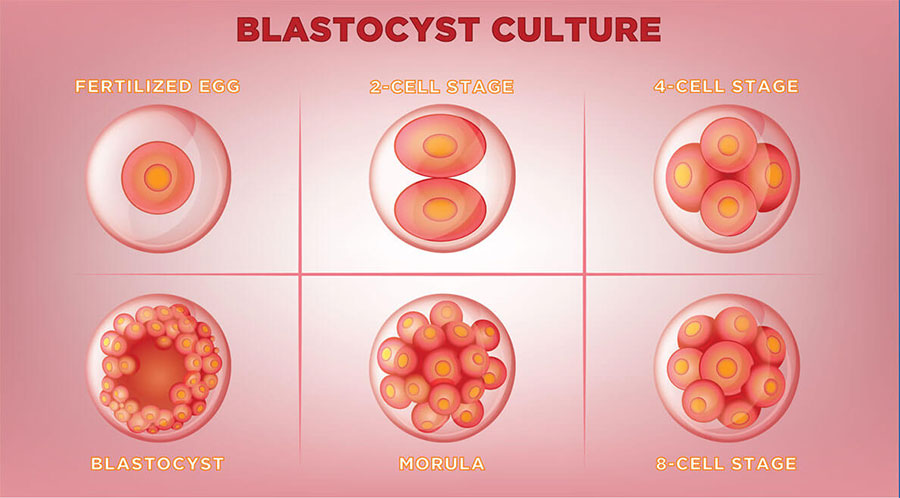
What is Blastocyst Culture?
Blastocyst culture and transfer is a specific technique used during IVF to improve pregnancy rates. This technique involves allowing the fertilized embryo to develop for 5 days before introducing it into the womb. During this period the embryo has reached the blastocyst stage and has gained 100s of cells. These embryos which have survived for 4-5 days are more likely to implant than the ones developed for just 2-3 days. Thus the doctors are in a position to select the more advanced embryos for implantation and successful pregnancy.
The main advantage of Blastocyst Culture and Transfer is that it improves the implantation rate and reduces the risk of multiple pregnancies, since fewer (1-2) embryos are transferred.
What to expect post-procedure?
Patients usually start progesterone medication after egg retrieval. Patients are also given estrogen medication in some cases after embryo transfer. Patients may be requested to lie down for a certain period of time after embryo transfer. Pregnancy testing is usually done 14 days after blastocyst transfer.
What are the risks involved?
Not all embryos will survive for 5 days and rarely there have been cases when none survived until 5 days resulting in the cancellation of the IVF cycle.
How successful Blastocyst transfer?
Blastocyst Culture and Transfer is a safe and successful procedure and yields 45%-50% pregnancy rates. Transferring at the blastocyst stage confers a significant increase in live birth rate per transfer.
